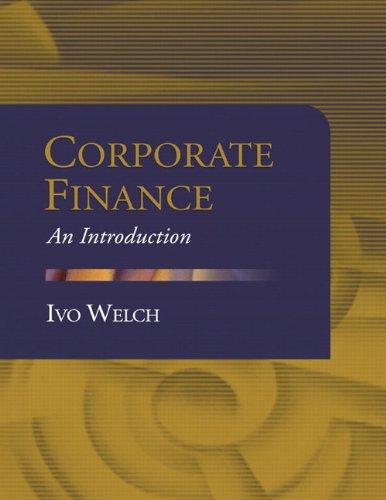(a) No, it would not be better to use PepsiCos rate of 7.5% as the CAPM risk-free...
Question:
(a) No, it would not be better to use PepsiCo’s rate of 7.5% as the CAPM risk-free rate. The CAPM requires the risk-free rate, not PepsiCo’s expected interest rate (and definitely not its promised interest rate, either).
(b) PepsiCo had an interest expense of $219 in 2001 on balance sheet short-term borrowings of $354 and long-term debt of $2,651. This interest/debt ratio suggests a nominal interest rate of $219/($354 + $2,651) ≈ 7.3%. However. you do not know whether some of the interest expense went to pay for other liabilities, when PepsiCo contracted its debt, or what the interest rate would be if it could refinance in 2001. This rate is indeed reasonably in line with the 7.5% typical for A+ rated bonds.
(c) Yes, it makes sense. Realize that PepsiCo’s asset cost of capital also includes liabilities that are interest free
(such as taxes payable).More importantly, the 7.5% A+ bond yield is based on promised rates of return, not on expected rates of return. It contains a default premium, as well as a risk premium and a liquidity premium. So, 7% is not necessarily crazy as an overall cost of capital, but it definitely appears to be on the low side.
Step by Step Answer:







